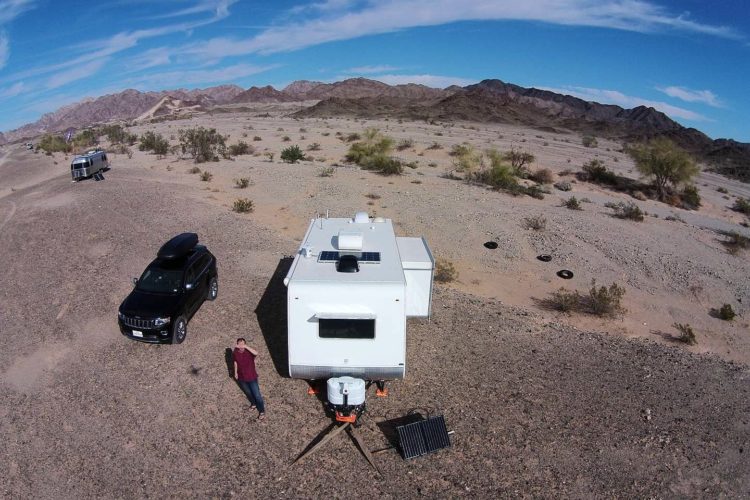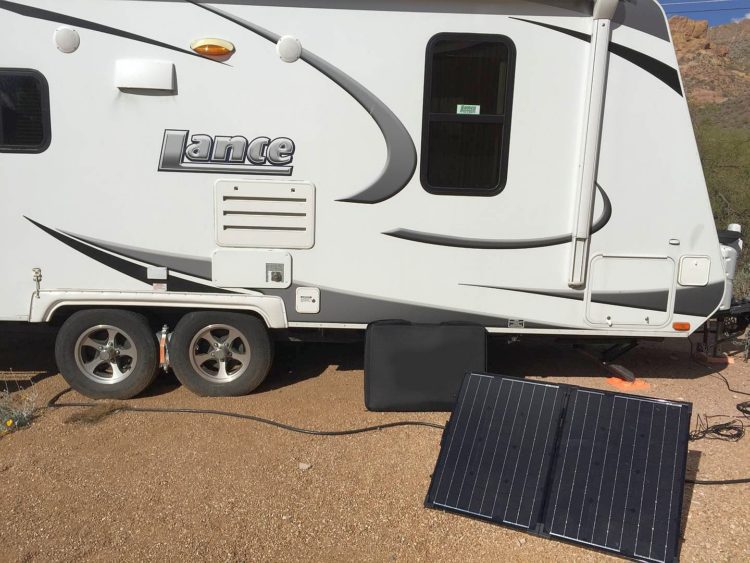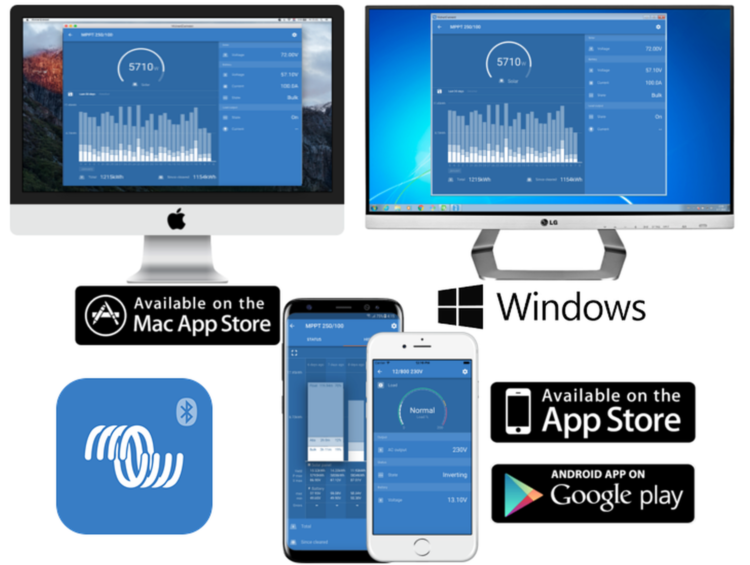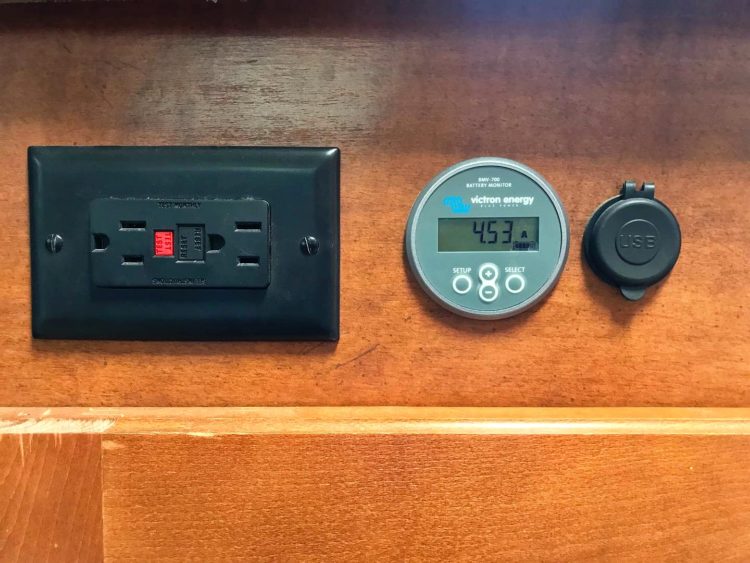
Battery monitors, on the face of it, are a simple yet essential piece of kit for many. No more so than for Kelly Beasley and Marshall Wendler of CampAddict. Kelly recently got in touch with me about their insightful experience with a BMV (Battery Monitor Victron) – a BMV-700 in this instance.
Victron offer a complete range of battery monitors and monitoring solutions, from a basic BMV to more complex offerings. You can read about that in a recent blog, which covers all monitoring solutions, the complete BMV product range, accessories and related products.
Who are Camp Addict?
Taken from their website, CampAddict.com bill themselves as:
“Your #1 source for camper accessories, travel trailer accessories, motorhome accessories – RV accessories of all kinds! Some items are RV must-haves, some are RV essentials.”
Co-founder Marshall Wendler brings his technical expertise to help explain RV products in an easy to understand fashion. Full-time RVing since April 2014, Marshall loves sharing his knowledge of the RV lifestyle – which is just the case in this guest blog by him, which we hope many will find useful.
Full-time RV life
I’ve been living full-time in my RV for over 5.5 years, and the vast majority of this time I’m boondocking (not staying in RV parks) so I’m not attached to any type of utility.
Power is a constant need, and I rely on my two 6-volt batteries to supply my power.
I have two choices to keep my batteries charged – solar power and portable generator use. Both options require me to understand how much power I’ve used, what charge condition my batteries are currently in, and how much power I’ve been able to ‘put back’ into the batteries.

Portable solar panel. The main headline image in this blog shows that too, plus rigid panel rooftop solar.
Back in the early days, I had a couple hundred watts of solar power charging my batteries. Other than the solar controller’s basic display, there was no way of knowing what was really going on with my batteries. I was able to see battery voltage, and that was it. No clue of the actual flow of electricity in/out of my batteries.
Enter The Battery Monitor
It wasn’t until I installed a Victron BMV-700 Battery Monitor did I finally have an ‘ah-ha’ moment regarding what was going on with my batteries. With the optional Bluetooth Smart dongle (you can purchase the BMV-712 Battery Monitor to get built-in Bluetooth) I can monitor the battery condition via an app on my iPhone.
This has turned out to be one of my most-used apps. I’m even a bit weird about how much I enjoy seeing what’s going on with my batteries.

Now, with VictronConnect, I can see how much power is being placed into my batteries from my solar system, how many amp-hours of power I’ve used, and when my batteries have been topped off.
My Electrical Life Pre-Battery Monitor
Before I had my battery monitor, my daily routine would go something like this: I would wake up in the morning and cycle my solar charge controller’s display through to the screen showing the battery voltage.
I would try to do this before the sun was hitting my solar panels for a true reading of the actual battery voltage. If you look at this screen when the solar panels are generating power, you are seeing what voltage the solar charge controller is sending to the batteries, not what voltage the batteries are at in a ‘resting’ state.
This ‘resting’ state voltage would give me an idea of how depleted my lead-acid batteries were overnight. With lead-acid batteries, you are not supposed to drop them below a 50% charge level for maximum life.
The best way to observe the correct charge level is to observe the ‘resting’ voltage (ideally with zero load and after a few hours of no use, but this isn’t practical in RV life). If my batteries were showing around 12 volts I’d know they took a good hit that night. If they were closer to the 12.4-volt range, then they had a pretty good night. But I didn’t know how much actual power (amp-hours) had been ‘removed’ from the batteries.
I would then observe the battery voltage, as displayed by the solar charge controller, throughout the day as the solar panels charged the batteries. However, this only told me what mode the solar charge controller was in. That is, what voltage the controller was sending to the batteries. I had zero idea of how charged the batteries were.
My solar charge controller is a ‘stupid’ PWM controller (As opposed to a ‘smart’ MPPT controller). This means it runs on a set program and isn’t ‘smart’ enough to make adjustments during the day based on battery voltage, change in the amount of sun the solar panels are getting, etc.
The information it showed me was pretty much useless. The only good information was the voltage of the batteries when the solar panels weren’t producing, but this is only one piece of the puzzle. Many pieces were missing!
Side note: If you think that the battery level indicator on your RV’s information panel (the one that also shows holding tank levels) is any good, think again. This typically shows battery levels in 25% increments and goes off the battery voltage only. And by that, I mean the battery voltage that it senses at a given moment.
For example, if your water pump kicks in, the battery voltage will temporarily drop. The battery level indicator may sense this and show an overall decreased battery charge when in reality your battery level is just fine. Yeah, these battery indicators are pretty useless pieces of equipment.
My Electrical Life Post Battery Monitor
To say that installing a Victron battery monitor was one of the best modifications I did to my travel trailer isn’t doing it justice. As corny as this may sound, the Victron battery monitor changed my life. At least my RV electrical life!
The Victron battery monitor can ‘see’ the flow of electricity into and out of my RV house battery bank. It does this via a shunt that is installed as the last item before the battery’s negative terminal.
Any power ‘leaving’ the battery first passes through the shunt before being ‘consumed’, and any power being put back in the battery (via solar or shore power) also passes through the shunt. The shunt is connected to the battery monitor head unit that displays, and keeps track of, this power usage.
Now I have access to how much power has been taken out of the batteries (how many amp-hours), what the precise voltage of my batteries is, and how many amps of power are being either pulled out of, or put into, my batteries. MUCH more USEFUL information.
I’ll admit it. I was a bit obsessed, and maybe still am, with watching the Victron app to see what is going on with my batteries. I watch how many amps my solar panels are currently putting into my batteries.
I watch how many amps of power it’s taking to charge my computer at night when I don’t have solar to ‘help’. Watching what happens when the water pump cycles on. It’s the little things in life!
The number one benefit of having a battery monitor has to be I now can be kinder to my batteries, which translates to longer battery life.
Your Batteries Will Thank You
Lead-acid batteries like to be fully charged each day. If you aren’t able to fully charge them daily, their lifespan will suffer. This was the case with my first set of RV batteries. They were showing signs of coming to the end of their life before I had been living in my RV full-time for a year.
Before I had my battery monitor, I had no idea what was going on with my batteries state of charge. Today I can verify that yes, indeed, my batteries were fully charged on a given day. Or no, I was still down X-number of amp hours today because it was a bad solar day, and I better limit my use through the night.
It is my strong opinion that a battery monitor should be a mandatory piece of equipment for any RVer who isn’t plugged into shore power all the time. If you ever rely on your RV house batteries to power your rig, then a battery monitor is a key piece of equipment to help you truly understand what is going on with your batteries.
Links
CampAddict Website – https://campaddict.com/
CampAddict on Facebook – https://www.facebook.com/CampAddict/
CampAddict on Instagram – https://www.instagram.com/camp.addict/
CampAddict on Pinterest – https://www.pinterest.co.uk/campaddict0183/



















